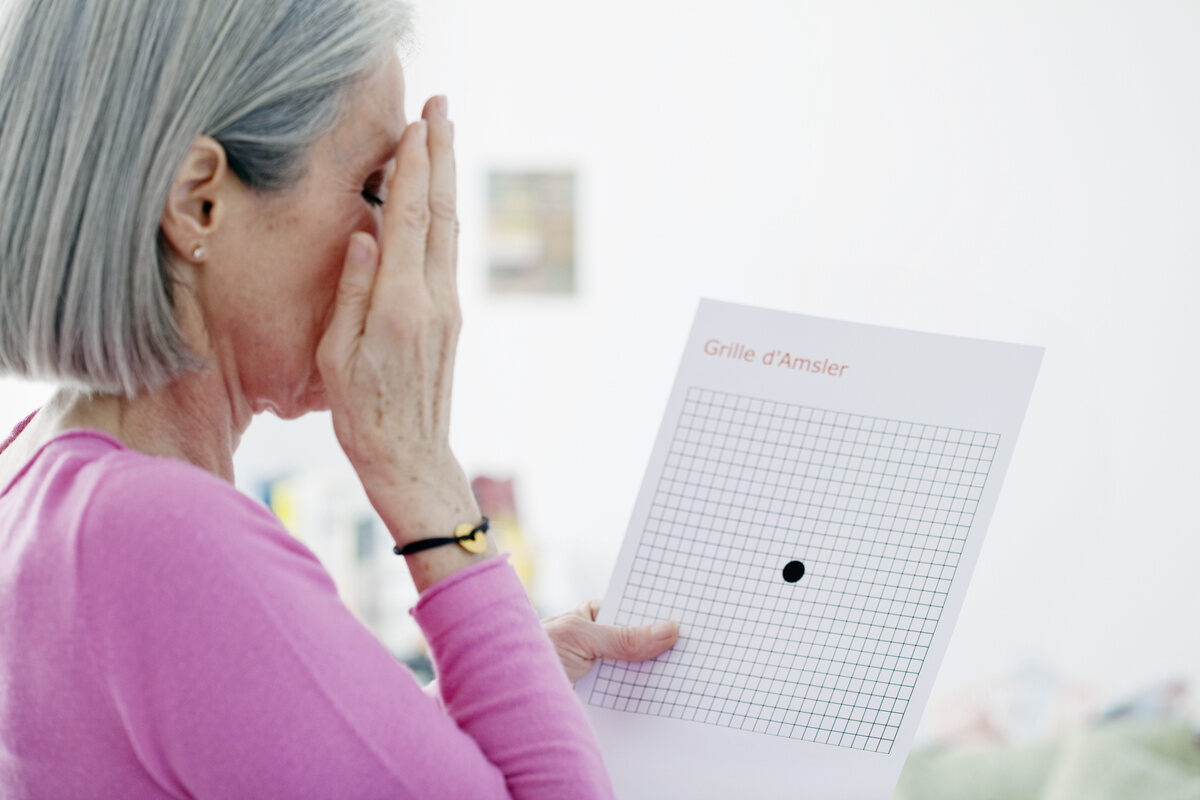
Did you know that approximately one in ten Americans over fifty have some form of macular degeneration? This condition is extremely common, and yet, you may have never heard of it. How are you supposed to catch the early symptoms of macular degeneration if you don’t know anything about the disease?
That’s where we come in.
In this article, we’ll tell you what macular degeneration is. We’ll also tell you its early and late symptoms, how it’s diagnosed, and how it’s treated. We’ll even tell you what a diagnosis means for you and how to prevent further vision issues.
All you need to do to educate yourself about this serious condition is keep reading.
What Is Macular Degeneration?
Macular degeneration is an eye disease that typically targets those over fifty years old. It affects central vision, meaning it makes it hard for people to see what’s directly in front of them.
There are two types of macular degeneration, called dry and wet.
Dry macular degeneration is the most common type, making up nearly ninety percent of those diagnosed. It’s a slow loss of vision caused by small yellow protein deposits forming in your eye. On some occasions, the dry form can change to the wet form.
Wet macular degeneration is more severe and can lead to total vision loss. It occurs when blood vessels in your eye leak blood and fluid.
Early Symptoms of Macular Degeneration
Early macular degeneration doesn’t always come with symptoms. This doesn’t mean there are no symptoms. There are a few, but they can often go unnoticed due to how common they are.
The biggest symptom is difficulty seeing in low light, such as when it’s dark outside. You may also notice a gradual blurring of your vision or colors seeming dimmer than they used to.
It’s important that you receive regular eye exams. Macular degeneration needs to be caught early on, and a doctor will notice the signs sooner than you will.
Later Symptoms of Macular Degeneration
The later stage is when you may notice more symptoms of macular degeneration. Like the earlier stage, two of these symptoms are difficulty seeing in low light and colors looking less bright than they used to.
You might also notice blank spots in your field of vision or blurriness in the center of your vision. In addition, lines will sometimes look wavy or crooked instead of how they should look.
Pay careful attention to your vision when experiencing late symptoms of macular degeneration. Severe changes in your vision at this stage may signal the development of wet macular degeneration. If this happens, you could experience a total loss of your central vision.
How Is Macular Degeneration Diagnosed?
Macular degeneration can be diagnosed by any eye doctor during a typical eye exam. At this exam, your doctor will first speak with you to establish a medical history. This will help them decide if you have any of the risk factors for macular degeneration.
If they decide you are at risk, then your eye doctor will run a variety of tests to diagnose you.
You may be most familiar with the dilation test. Eye drops that dilate your pupils are put in your eyes. Then, your eye doctor scans them with a special lens to look for any changes.
Another test that might occur is OCT, where your doctor uses a machine to scan your eyes.
What a Macular Degeneration Diagnosis Means
Damage from macular degeneration is irreversible. If you have been diagnosed, you cannot be cured. All that you can do is prevent further degeneration of your eyes.
Once you’ve been diagnosed, it is important that you keep up with your regular eye exams. Your eye doctor will need to monitor your condition to make sure further damage doesn’t occur.
Going to your eye exams regularly will cut down on the risk of complications. In addition, it can help delay the progression of the disease.
Your doctor will help you determine what a macular degeneration diagnosis means for you personally. They will also help you work on changing your lifestyle to avoid the disease getting worse.
How Is Macular Degeneration Treated?
Unfortunately, there is currently no cure for macular degeneration. All that you can do is monitor treatment to make sure the disease doesn’t worsen.
For some people, a treatment plan may be something as simple as making changes to your lifestyle. Or it could mean taking certain vitamin supplements.
For others, treatment could be more serious. You could be given prescription medications. In some cases, you may even need laser therapy to prevent the condition from getting worse.
This may not always be the case. Though there is currently no cure, new clinical trials are being put into place all the time. If you’re interested, you could see if there’s a trial near you.
Preventing Further Vision Loss
While you’re being treated for macular degeneration, you want to take steps to protect your eye health. This will help you avoid developing other vision problems.
The best thing that you can do is to take breaks when using a computer. This will help you avoid dry eyes that can result from staring at a computer screen. If working with computers is essential to you, consider a glasses prescription to further protect your eyes.
Another thing you can do is wear sunglasses when going outside. Your eyes are particularly sensitive to UV radiation. Wearing sunglasses will protect you.
Reach Out to Us
Now that you’ve heard about the early symptoms of macular degeneration, is there anything you’ve noticed? Do you have any worries about your eye health? Do you have more questions for us?
If the answer to any of these is yes, you should contact us at Texan Eye! We’re always eager to hear from people, and we’re always ready to help.
Don’t wait- reach out to us today. Let us help you with any questions or problems you have. You won’t regret it!
